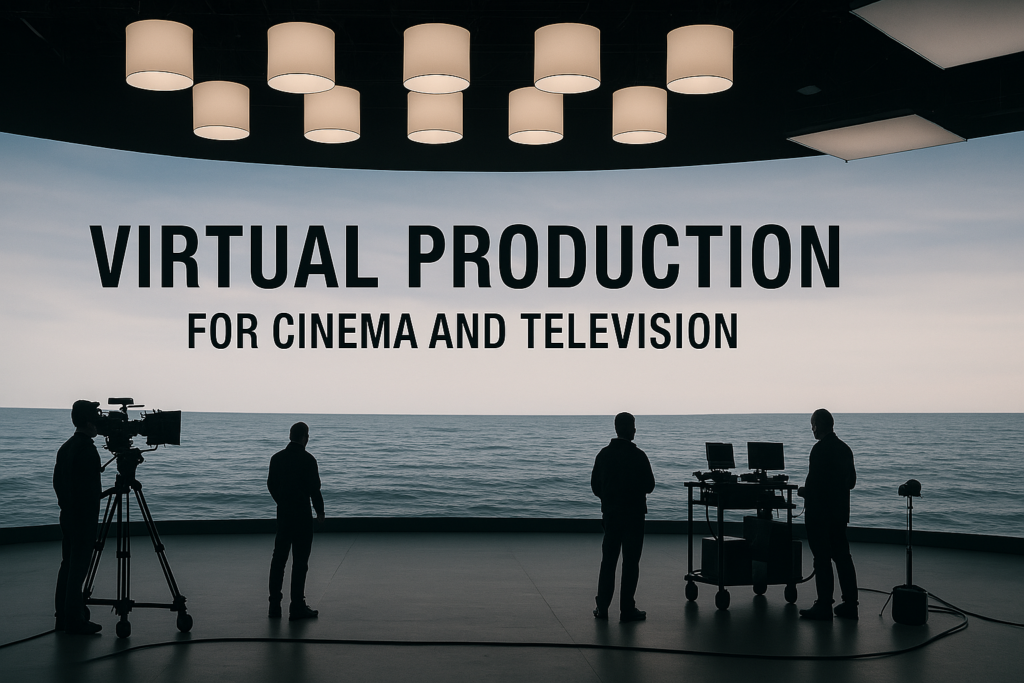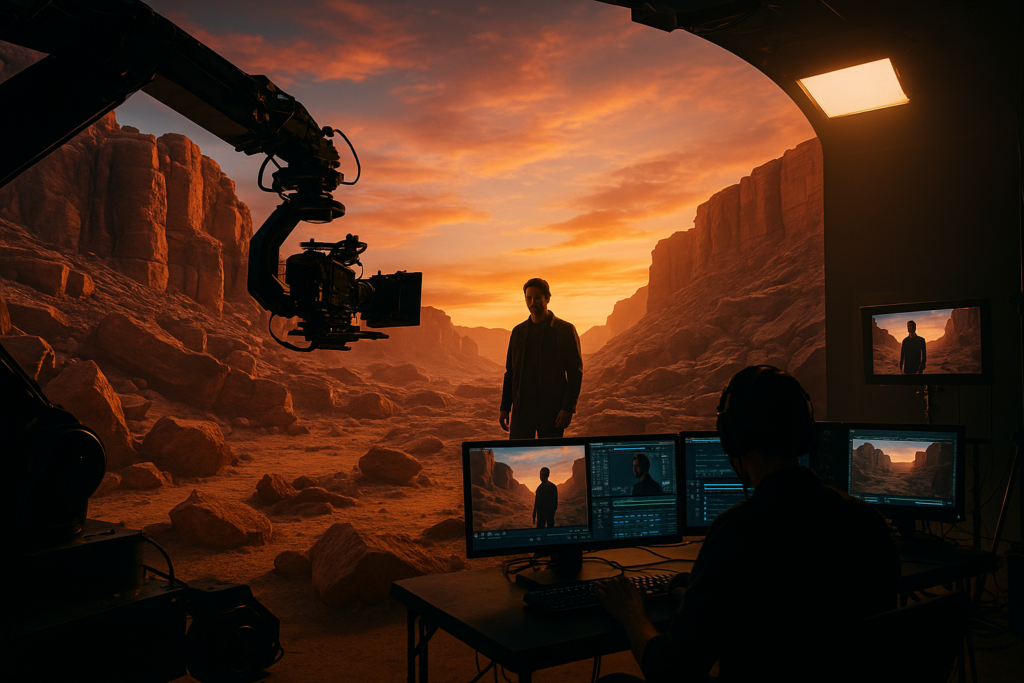
Introduction
In recent years, the world of audiovisual production has witnessed a radical transformation through the integration of innovative technologies. Among these, Ledwalls and Virtual Production are emerging as powerful and versatile tools capable of redefining creative and production processes in film and television. This synergy offers new possibilities for the creation of immersive environments, the reduction of production costs and time, and unprecedented creative control.
Technical Insight
What is Virtual Production?
Virtual Production is a set of techniques that combine traditional cinematography with real-time digital tools. In particular, through the use of Ledwalls, it is possible to project digital settings directly onto the set, allowing actors and crew to interact with scenery that has already been “rendered” and is visible during filming.
Technical characteristics of Ledwalls for Virtual Production
Not all Ledwalls are suitable for this application. The technical requirements for use in virtual production are very stringent:
- Pixel pitch: A fine pixel pitch (less than 2.5 mm, ideally less than 1.5 mm for close-up shots) is crucial to ensure a sharp image free of in-camera visible artifacts.
- High refresh rate (≥ 3840 Hz): critical to avoid flickering or distortion in camera images.
- High brightness and contrast: For realistic integration with physical set lighting and optimal color rendering, Ledwalls with high brightness (measured in nits) and a high contrast ratio are required.
- Wide viewing angle: essential for achieving realistic rendering even in mobile camera shots.
- Precise calibration: Accurate color and brightness calibration of the entire Ledwall is critical to ensure visual consistency and seamless integration with the physical elements of the set.
- Refresh rate and frame rate: A high refresh rate (at least 60 Hz, ideally higher) and precise synchronization with the camera frame rate are essential to avoid flickering and scanning artifacts (rolling shutter).
- Color depth (bit depth): A high color depth (10-bit or higher) allows a wider color gamut and more delicate hues to be displayed, contributing to the realism of the image.

Integration with tracking systems
The use of Ledwalls in Virtual Production is often combined with camera tracking systems, which detect the position and orientation of the camera in real time. This allows the graphics engine (such as Unreal Engine) to update the perspective of the virtual environment on the Ledwall in perfect synchrony with the movement of the real camera.
Virtual Production Systems:
- Video control and management hardware: Advanced video processors, media servers, and workflow management systems are needed to control the display of content on the Ledwall, manage complex data streams, and synchronize all system components.
- Integrated lighting: The lighting of the physical set must be carefully coordinated with the light emitted from the Ledwall to create a consistent and realistic visual integration. Lighting control systems that can be synchronized with the virtual content are often used.
Practical applications in television and film
Virtual sets for fiction and film
Film productions such as The Mandalorian (Lucasfilm) have popularized the use of Ledwalls to create immersive virtual sets. In these applications, the digital environment is projected onto a 270-degree curved Ledwall, creating an illusion of depth that is realistic even in-camera.
TV programs and talk shows
In television, Ledwalls are used to create dynamic backdrops or flexible sets that can be updated in real time according to the set list. Virtual production also makes it possible to simulate different locations in the same studio, lowering logistical and set-up costs.
Commercials and video clips
With the ability to quickly change locations, Ledwalls allow advertising productions to shoot in different settings without physical displacement, with a significant impact on time and budget.

Expert advice
Ledwall selection
For virtual production applications, it is critical to choose LED modules designed specifically for professional filming. Check for compatibility with tracking systems and the presence of advanced color calibration capabilities. A key aspect concerns the refresh rate.
Beware of calibration
A poorly calibrated Ledwall can introduce color dominance, exposure problems, and discontinuities in the integration between real objects and the virtual setting. It is good practice to perform accurate photometric and colorimetric calibration between displays, rooms, and lights.
Layout and curvature
The set design must take into account thecurvature angle of the Ledwall, the camera distance, and the position of the actors. Incorrect layout can compromise the perspective and immersiveness of the virtual environment.

Conclusion
Ledwalls and virtual production represent an exciting frontier for the future of film and television. Their ability to create immersive environments, reduce costs and offer unprecedented creative control is opening new avenues for visual storytelling. Although implementing these technologies requires specific skills and careful planning, the benefits in terms of creative flexibility, production efficiency and visual quality are undeniable.
However beyond the technical aspects it is important to always consider that the ultimate goal of virtual production is to generate the most solid illusion of reality. All efforts must be focused on this. On-screen backgrounds must be treated with the same meticulousness as traditional location shooting. Whether they are filmed or generated from synthetic images, it is critical to pay attention to light direction, time of day, and weather effects. The camera should be positioned and moved as if it were in a real environment. Lighting should appear naturalistic, with the volumes present in reality, and focus on providing the correct contrast levels of light. Now more than ever, these decisions must be made with a cinematic intent, making sure that each visual element reinforces the narrative and authenticity of the scene.
And for those who want to know more, a link to an in-depth video in Italian
